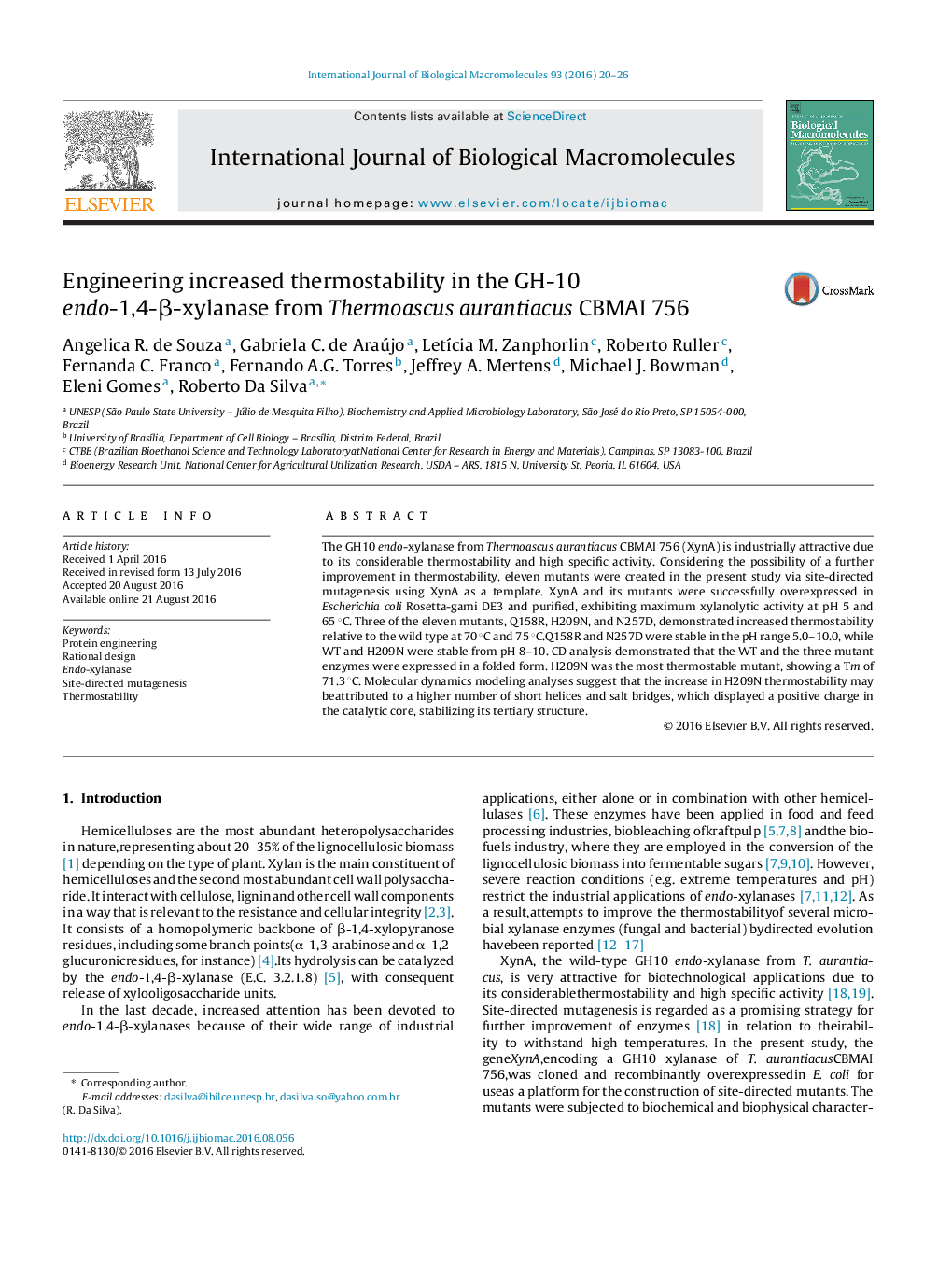| Article ID | Journal | Published Year | Pages | File Type |
|---|---|---|---|---|
| 1985526 | International Journal of Biological Macromolecules | 2016 | 7 Pages |
Abstract
The GH10 endo-xylanase from Thermoascus aurantiacus CBMAI 756 (XynA) is industrially attractive due to its considerable thermostability and high specific activity. Considering the possibility of a further improvement in thermostability, eleven mutants were created in the present study via site-directed mutagenesis using XynA as a template. XynA and its mutants were successfully overexpressed in Escherichia coli Rosetta-gami DE3 and purified, exhibiting maximum xylanolytic activity at pH 5 and 65 °C. Three of the eleven mutants, Q158R, H209N, and N257D, demonstrated increased thermostability relative to the wild type at 70 °C and 75 °C.Q158R and N257D were stable in the pH range 5.0-10.0, while WT and H209N were stable from pH 8-10. CD analysis demonstrated that the WT and the three mutant enzymes were expressed in a folded form. H209N was the most thermostable mutant, showing a Tm of 71.3 °C. Molecular dynamics modeling analyses suggest that the increase in H209N thermostability may beattributed to a higher number of short helices and salt bridges, which displayed a positive charge in the catalytic core, stabilizing its tertiary structure.
Related Topics
Life Sciences
Biochemistry, Genetics and Molecular Biology
Biochemistry
Authors
Angelica R. de Souza, Gabriela C. de Araújo, LetÃcia M. Zanphorlin, Roberto Ruller, Fernanda C. Franco, Fernando A.G. Torres, Jeffrey A. Mertens, Michael J. Bowman, Eleni Gomes, Roberto Da Silva,
